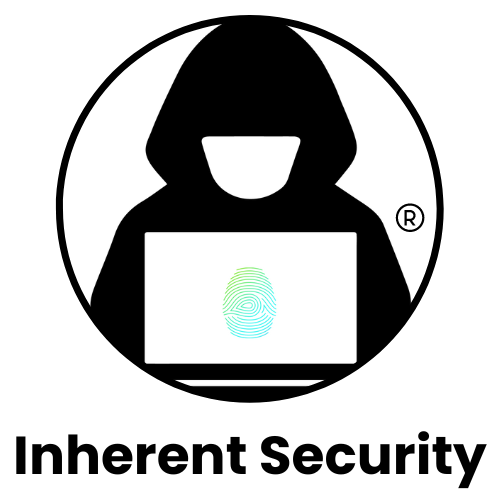Cybersecurity Best Practices Unique to Telemedicine
I hope you're navigating the transformation of telehealth and its impact on healthcare with ease.
We've all seen how telehealth has surged to the forefront of healthcare delivery, especially in recent years.
But with great innovation comes great responsibility!
Especially when it comes to safeguarding patient information and maintaining HIPAA compliance.
Let's delve into the unique cybersecurity challenges that telehealth presents and explore some best practices that go beyond the normal advice.
The Unique Cybersecurity Challenges in Telehealth
Telehealth isn't just a new coat of paint on traditional healthcare IT.
It's an entirely new vessel with its own set of vulnerabilities.
Here are some of the distinctive challenges we're facing:
Decentralized Environments: Unlike traditional healthcare settings, telehealth operates across various locations—patients' homes, remote clinics, even mobile devices on the go. This decentralization expands the attack surface exponentially.
Diverse Device Ecosystem: Patients and providers use a myriad of devices—smartphones, tablets, laptops—with varying security postures. Managing this diversity is no one size fits all task.
Real-Time Data Transmission: Telehealth relies heavily on real-time video and audio streams, which are susceptible to interception if not properly encrypted.
Third-Party Integrations: Telehealth platforms often integrate with third-party applications (like EHR systems, scheduling tools), each adding another layer of potential vulnerability.
Regulatory Ambiguity: Rapid telehealth adoption has outpaced regulatory guidance in some areas, leaving organizations uncertain about compliance requirements.
Cybersecurity Best Practices Unique to Telemedicine
Now, let's get into the nitty-gritty of how we can tackle these challenges head-on.
Here are some tailored strategies that move beyond the standard advice:
Implement Endpoint Health Checks Before Sessions
Before a telehealth session begins, automatically assess the security posture of the participant's device. Check for updated antivirus software, firewall status, and recent security patches. If the device doesn't meet the security criteria, provide guidance or restrict access until issues are resolved.
Use Dynamic Encryption
Instead of relying on static encryption keys, employ dynamic encryption algorithms that change keys periodically during a session. This approach makes it significantly harder for any intercepted data to be decrypted.
Deploy Zero Trust Architecture
Adopt a Zero Trust model specifically tailored for telehealth. This means every device, user, and network flow is continuously authenticated and authorized, reducing the risk from compromised devices or credentials.
Integrate AI-Powered Anomaly Detection
Utilize AI and machine learning to monitor real-time data flows and user behaviors. This helps quickly identify and respond to unusual activities that could signify a security breach.
Secure Telehealth-Specific APIs
Telehealth platforms often use APIs to communicate with other services. Ensure these APIs are secured using authentication methods like OAuth 2.0, and regularly conduct security audits on them.
Educate Patients on Security Practices
While we often focus on the provider side, patients play a crucial role in security. Develop easy-to-understand guides or quick tutorial videos that educate patients on securing their home networks and devices.
Telehealth-Specific Risk Assessments
Conduct risk assessments specifically focused on telehealth services. This should be a living document, updated regularly to reflect new threats and vulnerabilities unique to telehealth.
Customize Consent and Privacy Notices
Telehealth sessions can blur the lines of traditional consent. Ensure that consent forms and privacy notices are specifically tailored to inform patients about how their data will be used, stored, and protected in a telehealth context.
Implement Multi-Factor Authentication with Biometrics
Go a step further than standard MFA by incorporating biometric authentication for both providers and patients. This adds an extra layer of security that's hard to replicate or steal. Biometrics may also be easier for the older population vs remembering a username and password.
Prepare for Cross-State Regulatory Compliance
Telehealth often crosses state lines, each with its own set of regulations. Implement a compliance framework that adapts to the strictest applicable laws.
Why This Matters Now More Than Ever
Cyber threats are becoming more sophisticated, and the healthcare sector is a prime target due to the value of the data it holds.
A breach doesn't just mean financial loss; it diminishes trust and can have real-world health implications for patients.
By proactively addressing these unique challenges with innovative solutions, you're not just protecting data, you're safeguarding the integrity of the care provided.
Adopting these specific best practices not only helps with HIPAA compliance but also defends your innovation against threats.
Here’s why these strategies are crucial:
Enhanced Patient Trust: Security measures reassure patients that their information is protected, fostering trust and loyalty.
Operational Resilience: Proactive threat detection and automated incident response enhance your platform’s resilience, minimizing downtime and service disruptions.
Competitive Advantage: Implementing cutting-edge security practices differentiates your telehealth services in a crowded market, positioning you as a leader in secure healthcare delivery.
How I Can Help You Navigate
Over the past 15 years, I've worked alongside organizations like yours to build compliant, flexible, and secure systems.
My approach isn't about off-the-shelf solutions; it's about crafting strategies that fit your unique environment.
Whether it's conducting a comprehensive telehealth security audit or working as an extension of your team, I'm happy to help!
Lead with confidence and let's talk strategy.
Until next time, stay secure and keep innovating.
Thanks for reading and subscribing!
Larry
P.S. If you don't know where to start, try my helpful HIPAA Assessment quiz.
